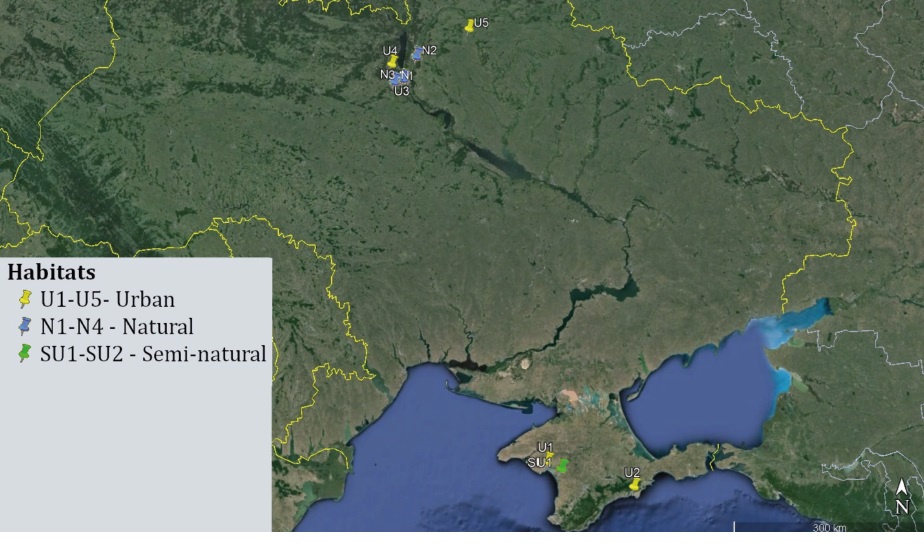Effect of habitat type on the structure of ant forage areas (Hymenoptera: Formicidae)
DOI:
https://doi.org/10.13133/2284-4880/1612Keywords:
ants, dispersal, urban habitats, tree size, strategiesAbstract
The purpose of this paper is to study the structure of ant forage areas in urban habitats, semi-urban habitats and natural habitats. The study was conducted in the Ukrainian regions of Crimea (2012 to 2013) and Kyiv and its suburbs (2015 to 2018, 2021 to 2023). We examined 1321 forage trees and 849 colonies of 9 ant species in Kyiv and suburbs; and 413 trees and 141 colonies of 2 ant species in Crimea. The methods we used included transect examination of the trees with ants along a 10 m wide strip, measuring tree sizes (trunk girth) and recording ant species and numbers. Most ant species show a negative relationship between distance from the tree and the number of workers, indicating that the farther from the tree, the less is the number of ants. In natural habitats, higher numbers of ants and greater distances to forage trees are observed compared with urban or semi-urban habitats. Quercus robur, Pinus sylvestris and Acer platanoides were the most visited trees with a total visit frequency of 0.86 of the total number of records. In urban habitats, Lasius niger and Lasius emarginatus controlled an average of one tree each, and Crematogaster subdentata controlled an average of 5.8 trees. In urban habitats (Kyiv and suburbs), more common were colonies of two ant species (L. niger, Formica cinerea). There was no significant correlation between the distance from the nest to the forage tree and the tree size. Ants show different dispersal strategies in different habitat types. In urban habitats, ants settle closer to forage trees and control fewer trees due to limited food resources.
Downloads

Downloads
Published
How to Cite
Issue
Section
License
Copyright (c) 2024 Stanislav Stukalyuk

This work is licensed under a Creative Commons Attribution-NonCommercial-ShareAlike 4.0 International License.




